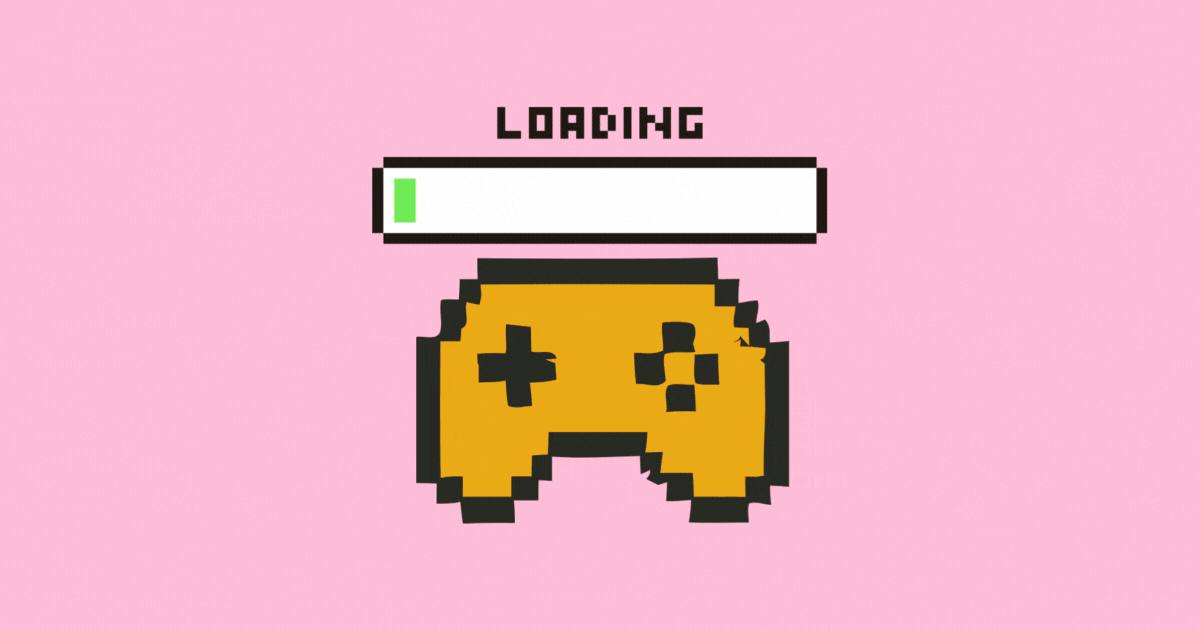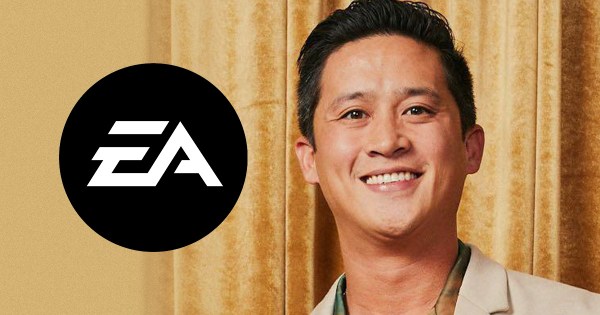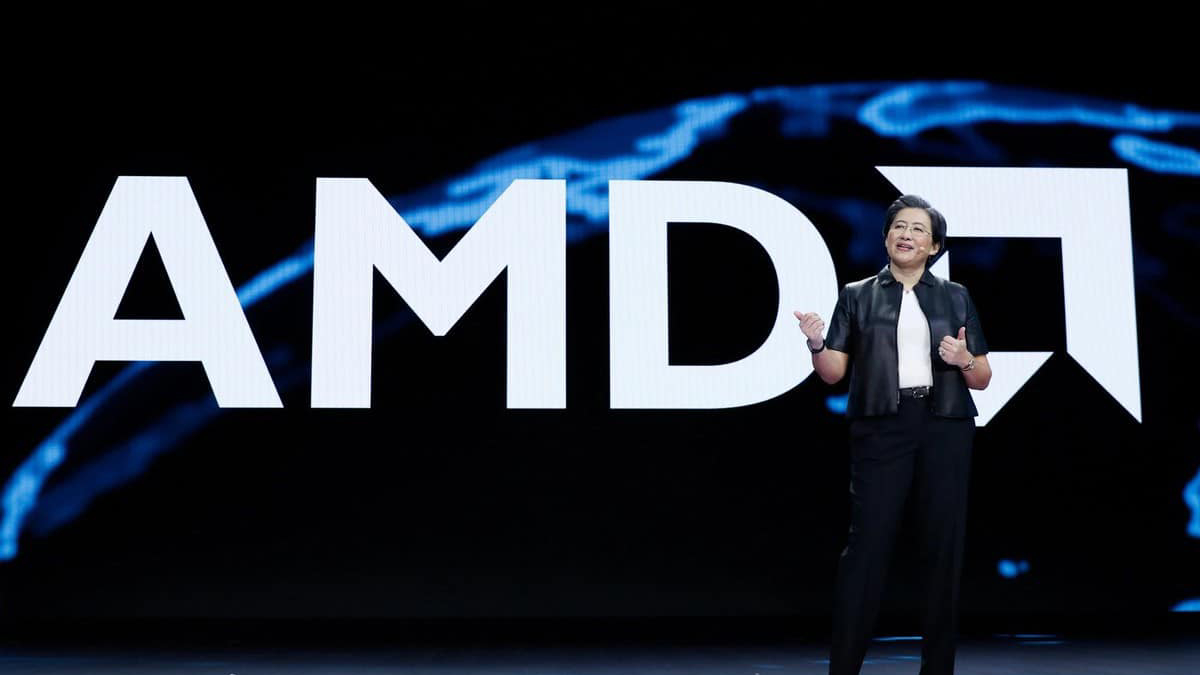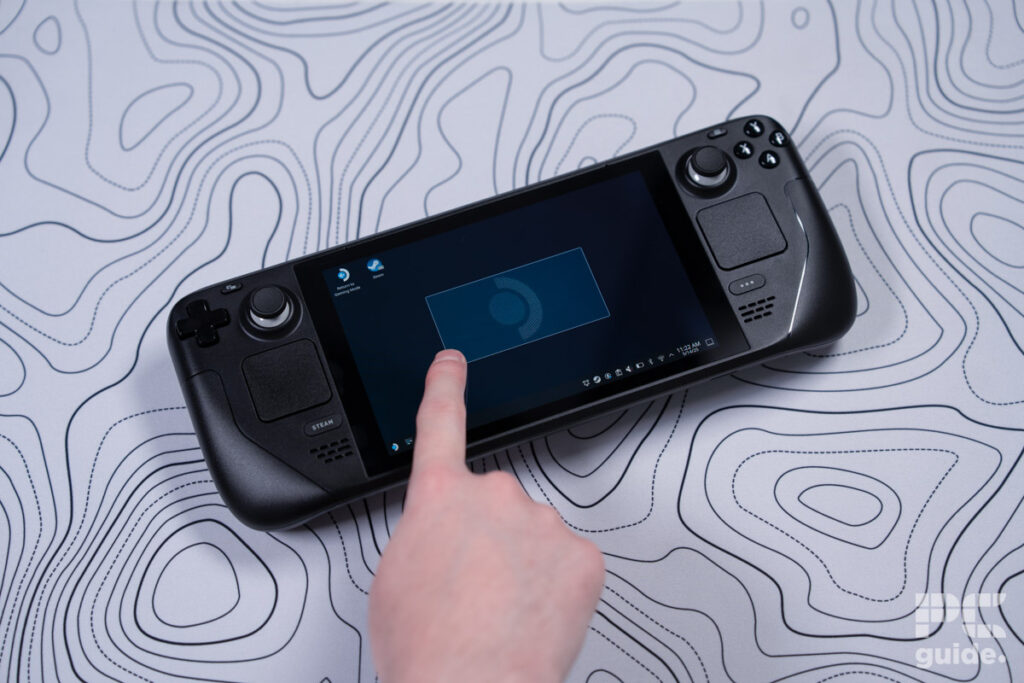E-Sports
Ponca City Wildcats Esports Overwatch 2 Team is going to OKSE State – Ponca City Now
Ponca City Wildcats Esports Overwatch 2 Team is going to OKSE State. The Overwatch 2 team battled through a tough playoff bracket of 8 different teams. They played a minimum of 2 games per team leading to a 7-5 victory in playoffs. This has landed them the number 3 seed going into the OKSE State […]

Ponca City Wildcats Esports Overwatch 2 Team is going to OKSE State.
The Overwatch 2 team battled through a tough playoff bracket of 8 different teams. They played a minimum of 2 games per team leading to a 7-5 victory in playoffs. This has landed them the number 3 seed going into the OKSE State Bracket. They will face off against Owasso, Bixby, and Epic for the State title at Bixby High School on May 13th starting at 9am. It will be live streamed on Bixby’s Twitch account StraitBixbyEsports (https://www.twitch.tv/straitbixbyesports) or Bixby’s Youtube Account, Bixby Esports, (https://www.youtube.com/@bhsesports).
The Ponca City Wildcat Overwatch 2 Team is made of up of Carson Lunn (9), Elizabeth Burdick (11), Jaxon Bahner (10), Robert Watkins (10), and Jackson Holliman (11).

E-Sports
Alex Dao Joins EA to Build Out the Gaming Giant’s Ad Business
Former Snap executive Alex Dao has joined Electronic Arts in a new role that will unite the gaming brand’s creative advertising and sponsorship capabilities. He is tasked with building EA’s brand partnerships without disrupting the gaming giant’s global user experience. He is tasked with building EA’s brand partnerships that simultaneously don’t annoy the gaming giant’s […]

Former Snap executive Alex Dao has joined Electronic Arts in a new role that will unite the gaming brand’s creative advertising and sponsorship capabilities. He is tasked with building EA’s brand partnerships without disrupting the gaming giant’s global user experience.
He is tasked with building EA’s brand partnerships that simultaneously don’t annoy the gaming giant’s global user base.
Dao previously held roles in sales, account management, and business development at Yahoo, Criteo, and Amazon before arriving at Snap in 2019. While at Snap, he rose to managing director of global agencies and sales partnerships in 2023 and expanded the platform’s agency partner program earlier this year.
In a statement, Juliet Niczewicz, senior director of corporate communications at EA, said Dao “brings a wealth of experience in building and partnering with agencies and brands … With [him] joining the team, EA is driving the opportunity for brands to show up in ways that are meaningful, contextually relevant, and creatively powerful.”
Dao’s hiring is part of a broader shift in EA’s ad business. CEO Andrew Wilson announced plans to establish an ad network during last year’s earnings call. As companies seek advertising revenue, they face challenges such as a lack of standardized measurement, competition with e-commerce giants, and costly infrastructure investment.
To EA’s advantage, the company has years of first-party data from its “player graph,” an ID set aggregating play history and preferences used by developers and marketers. Still, adding ads carries risk, as gamers often view them as disruptive to the gaming experience.
Dao’s role seems to be gamer-centric when it comes to brands’ presence in games. Signaling his philosophy on authenticity and engagement, Dao offered advice to brands in a June 2024 issue of Ipsos’ What the Future. “[O]ptimizing toward happiness and not just pure growth numbers and engagement metrics and likes is the future because people care about connections and happiness,” he said.
Separately, EA recently switched up its agency roster for its own advertising spend. In March, EA selected GroupM as its media agency of record, ousting incumbent T&Pm after a six-month review as the company revamps its global media-buying strategy.
E-Sports
What’s keeping women out of the video game world
She wanted a low-stakes extracurricular to enjoy with her friends: something new that didn’t have to be graded. She thought competitive video games might be the ticket. Michele Kasama is a straight-A, Grade 11 student at G.W. Graham Secondary School in Chilliwack. Her after-school time is divided between studying and her part-time job, but it […]


She wanted a low-stakes extracurricular to enjoy with her friends: something new that didn’t have to be graded. She thought competitive video games might be the ticket.
Michele Kasama is a straight-A, Grade 11 student at G.W. Graham Secondary School in Chilliwack. Her after-school time is divided between studying and her part-time job, but it can be a struggle to balance the demands of high school with an enjoyment of teenagehood.
When she heard about the new competitive video game league starting at her school, she and some friends decided to join. So what if she barely knew how to hold a controller?
“I wanted to learn how to play,” she said. “I don’t do computer games. I have, like, zero skills. I have no clue. I had friends and they knew how to do it, I thought it would be something fun to do together.”
Her friends turned out to be onto something. Video games were a blast. Kasama and her friends had joined a small group of girls who banded together in computer-teacher Jenny Cho’s room during lunch hours to play. But gaming was also embarrassing, Kasama said. With so little knowledge of the controls, Kasama died almost instantly each game. And when she played against some of the boys during G.W. Graham’s in-school eSports tournament, the challenges were even more pronounced.
“My brain wasn’t connected to my fingers. My fingers just landed wherever they wanted,” she said.
That’s all changing. She has improved significantly over the last year, thanks to practice and support from her fellow girl gamers.
“I know a little bit more strategy,” she said. “It takes a little bit longer to kill me.”
But the need for all that practice highlights some of the challenges of gaming while female.
“With the [girls], I was a little bit more comfortable,” Kasama said. “But when I played with the guys, they were a little bit more brutal about it.”
When I visited Chris Bonshor’s classroom in March—and got my butt whooped in Super Smash Bros.—the room was filled almost entirely with teen boys. Teen boys hanging around a table, eating McDonalds. Teen boys standing in a corner discussing gaming tactics. Teen boys in Pokemon t-shirts, teen boys in Xbox hoodies, teen boys in NASA ball caps.
There was one girl seated by herself, and she left without playing a game.
It wasn’t unexpected. The video game world is rife with testosterone—often toxically so. Women who play video games are often subject to significant harassment from their male counterparts. Some female gamers hide their gender while playing—using masculine usernames and avoiding verbal communication—in an attempt to avoid the harassment that comes with gaming while female.
Gamergate—an online harassment campaign that targeted women in the video game industry in 2014 and 2015—is one example of co-ordinated attacks on female gamers, although it is by no means the only one. Gamergate was simply an expression of long-standing misogyny in gaming, Adrienne Shaw, an associate professor of gender and video games at Temple University, told Folklife Magazine: “It’s something that has existed, and it was just particularly loud at that particular moment. But it never really went away.”
These issues and others create a series of complex challenges that prevent girls from starting to play video games—or discourage those who do try. That results in fewer women at the highest levels of gaming—both on the playing and development sides. Only a quarter of all people employed at Canadian video game companies are women, and female players are significantly underrepresented at the elite levels of play.
Some argue the situation will improve as more women fight their way into the industry and achieve accolades and admiration. Melissa Burns isn’t so sure fighting for representation is the silver bullet some think it is.
Burns is a longtime gamer and CEO of eSports Canada, an organization that promotes eSports at the elementary and high school levels. When I called her in March, her voice was bubbly and distinctly feminine—something that would sound like a clear target in an online multiplayer game.
“In eSports, it is not always a welcoming face for a lot of under-represented individuals, whether that be your sexuality, your gender, your ethnic background, your cultural background,” she said. “I noticed it a lot in [in-game communications]—so when you’re in-game, you talk to your teammates—and I experienced a lot of discrimination in those spaces.”
When she started developing eSports programs for the students at her Manitoba school, she thought her being a woman gamer would help more girls show up to play. That turned out to not be the case.
“I was the visible role model that should encourage them to come like I’m here. I’m a girl. I am gaming,” she said. “And they didn’t come. I was absolutely shocked.”
The results were the same for the following year of Burns’ eSports program. But in the third year, she added a practice that was just for girls and gender diverse players. That was a success. Girls flocked to the female-only space, while boys continued to dominate the open practice time.
Cho is considering something similar for G.W. Graham next year.
“Girls are equally capable, but they don’t express as much confidence,” Cho said. “Sometimes you have to give them opportunities to be separate and do it until they’re comfortable.”
Cho had been doing that in a less intentional way this past school year. As the only female teacher in the eSports league, her room had become the de facto girls gaming club. Although any students were welcome anywhere, the girls gravitated towards Cho.
“I had girls coming out regularly to play, but it did take some time to convince them that they could be in the tournament,” Cho said. “I had to go and convince the girls, ‘Yes, you can play. You don’t have to win.’”
Kasama was one of the girls in Cho’s group who did decide to join the tournament. She said the boys were “more brutal” than the girls when she played. That brutality wasn’t personal, it was competitive. But the girls were more likely to help her figure out the controls and fighting combinations while they played to win, she said.
To me, Bonshor’s classroom didn’t feel like a toxic environment: the teen boys were pleasant, if competitive, and were kind to this female gamer (although I am admittedly twice their age and a journalist). But the teachers did notice differences in the play styles of the girl and guy gamers that back up Kasama’s experience.
“When girls were on the switch and the boys came in, [the boys] kind of wanted to play on their own,” Cho said. “Not because they don’t want to play with girls, but the style is very different.
“The guys are competing to compete,” she continued. “The girls are competing as well, because they want to win, but they do it in a more teamwork kind of way … They’re more verbally supportive of each other as they play.”
Some of the girls, like Kasama, came into the eSports league with little to no experience with video games. (It’s unclear how many boys came into the league with no experience gaming.) The learning curve was steep, and it mirrors what Cho has seen in tech over her decades as a woman in tech.
Before the 1980s, the proportion of women in university-level computer science courses was rising and on par with increases in law, medicine, and the physical sciences. But in 1984, something changed.
An article published by NPR’s Planet Money points to the introduction of the personal computer. Marketed almost exclusively to boys, the personal computer created a divide between the haves and the have-nots; the people who knew how computers worked and those who were just beginning to learn.
“I’m old enough to have gone through that era, so I remember it,” Cho said.
“Before the personal computer, computer science professors would assume that you didn’t know anything and start from there,” she said. “But after the personal computer was introduced, there was a lot of assumed knowledge. So if you’re a girl during that era, and you didn’t have access to a computer, you wouldn’t have that assumed knowledge, and so you would be behind, so then it sort of just exacerbated.”
Today, more and more girls are signing up for computer science courses in university. But the lingering effects of the boy-centric personal-computer era are still being felt today. Computer games continue to be marketed largely towards boys, with female characters often hypersexualized or missing entirely. New players, like Kasama, often struggle to play with their peers who have years more experience gaming.
She believes that more support for new gamers in a female-only space would help make many girls feel more comfortable in eSports.
“When you are safe to say what you want, you know that it’s going to be fine,” she said. “All the girls are welcome, and no matter how badly you fail, the other girls are there to support [you] and teach [you] how to play.
“We need to teach people how to play instead of just throwing them in and expecting them to know how to play, because that’s kind of how I had to learn.”
That is part of Cho’s plan for next year. She is working to make her computer lab feel more welcoming, and plans to focus on a few female-specific courses to introduce more girls to tech and gaming, while discussing the history of gender in gaming spaces.
Kasama will be back in Cho’s room in her Grade 12 year, ready to play video games with a little more experience under her belt. She hopes that more girls will join her, and that they will be able to support each other as they battle it out in Super Smash Bros. and other games.
“I hope that there’ll be girls who feel a lot more comfortable when they want to play,” Kasama said. “They won’t be ashamed because they are just in a room with the other guys intimidating them with their playing skills.
“They’ll be more free to play and fail, and knowing that they can still play without people making fun of them or judging them for their bad playing skills.”
E-Sports
RSF School board considers bringing in after-school esports at Rowe – San Diego Union-Tribune
The Rancho Santa Fe School District is exploring adding esports to its after-school offerings in the next school year. For those not in the know, esports or electronic sports is organized competitive video gaming—it’s now a CIF-sanctioned sport. For the after-school program, the district is considering a partnership with the Unified ESports League. According to […]

The Rancho Santa Fe School District is exploring adding esports to its after-school offerings in the next school year.
For those not in the know, esports or electronic sports is organized competitive video gaming—it’s now a CIF-sanctioned sport. For the after-school program, the district is considering a partnership with the Unified ESports League. According to founder and CEO Matthew Iske, United Esports uses gaming as a launchpad to help kids who spend too much time on their iPads or Nintendo Switches, helping to get them out of their rooms and engaging with peers, developing teamwork and communication skills, and exploring technology fields.
Locally, Unified ESports has programs at Mission Estancia in the Encinitas Union School District and schools in the San Diego and Poway Unified School Districts.
United Esports will supply all of the funding to transform a R. Roger Rowe School classroom into a gaming center with consoles, gaming chairs and framed esports jerseys on the wall from colleges such as UC San Diego and Georgia Tech, who field esports teams. As esports can be a way to help students with special needs, the program is offered free for clients of the San Diego Regional Center, which provides services to people with developmental disabilities.
All students who love gaming will also be able to join the program for a cost, opting to come a couple of times a week or daily after school.
During a presentation before the board on June 17, Iske said the games that the kids play during structured play sessions are selected with intention. Nothing involves violence; students play games such as Super Smash Bros., NBA2K, Madden NFL, League of Legends or a game called Overcooked! that simulates the experience of running a restaurant and working as a team. Kids also explore drone piloting and driving simulators, artificial intelligence, and can learn how to use tech to make art and music.
As Iske explained, the two-hour program also includes daily communication goals and a physical health and wellness curriculum —students learn how to have a healthy relationship with technology through the benefits of good posture, physical activity and nutrition: “You have to have a healthy mind and body to be a good gamer,” he said.
According to research conducted by UC Irvine, Iske said schools that employ esports programs can see as much as a 10% increase in school attendance and a 1.6 % improvement in student GPA.
Board members like Annette Ross were a little hesitant about the program, given just this school year they passed a new policy prohibiting electronic signaling devices from being out and on during the school day. Board Vice President Kerry Vinci said that his heart is in encouraging students to get outside.
Superintendent Kim Pinkerton said as an educational institution, they are always looking to provide a wide variety of after-school options for kids to learn, whether they are an athlete, artist or into robotics, which shares some similarities with esports.
“We’re providing an opportunity for students who have individual needs to be able to have interaction with peers and access to a safe environment where they can learn and learn safely…what it means to utilize (technology) for fun or work,” Pinkerton said.
Pinkerton said the contract will be brought back before the board for approval at a future board meeting.
E-Sports
Alex Dao Joins EA to Build Out the Gaming Giant’s Ad Business
Former Snap executive Alex Dao has joined Electronic Arts in a new role that will unite the gaming brand’s creative advertising and sponsorship capabilities. He is tasked with building EA’s brand partnerships without disrupting the gaming giant’s global user experience. He is tasked with building EA’s brand partnerships that simultaneously don’t annoy the gaming giant’s […]

Former Snap executive Alex Dao has joined Electronic Arts in a new role that will unite the gaming brand’s creative advertising and sponsorship capabilities. He is tasked with building EA’s brand partnerships without disrupting the gaming giant’s global user experience.
He is tasked with building EA’s brand partnerships that simultaneously don’t annoy the gaming giant’s global user base.
Dao previously held roles in sales, account management, and business development at Yahoo, Criteo, and Amazon before arriving at Snap in 2019. While at Snap, he rose to managing director of global agencies and sales partnerships in 2023 and expanded the platform’s agency partner program earlier this year.
In a statement, Juliet Niczewicz, senior director of corporate communications at EA, said Dao “brings a wealth of experience in building and partnering with agencies and brands … With [him] joining the team, EA is driving the opportunity for brands to show up in ways that are meaningful, contextually relevant, and creatively powerful.”
Dao’s hiring is part of a broader shift in EA’s ad business. CEO Andrew Wilson announced plans to establish an ad network during last year’s earnings call. As companies seek advertising revenue, they face challenges such as a lack of standardized measurement, competition with e-commerce giants, and costly infrastructure investment.
To EA’s advantage, the company has years of first-party data from its “player graph,” an ID set aggregating play history and preferences used by developers and marketers. Still, adding ads carries risk, as gamers often view them as disruptive to the gaming experience.
Dao’s role seems to be gamer-centric when it comes to brands’ presence in games. Signaling his philosophy on authenticity and engagement, Dao offered advice to brands in a June 2024 issue of Ipsos’ What the Future. “[O]ptimizing toward happiness and not just pure growth numbers and engagement metrics and likes is the future because people care about connections and happiness,” he said.
Separately, EA recently switched up its agency roster for its own advertising spend. In March, EA selected GroupM as its media agency of record, ousting incumbent T&Pm after a six-month review as the company revamps its global media-buying strategy.
E-Sports
AMD’s console partnerships might be the best way to fight Nvidia’s market dominance
PC Guide is reader-supported. When you buy through links on our site, we may earn an affiliate commission. Read More After Xbox announced it’s prolonging its partnership with AMD for its upcoming consoles, alongside the fact that it produces part of the hardware in the ROG Xbox Ally X, AMD is clearly making its mark […]

After Xbox announced it’s prolonging its partnership with AMD for its upcoming consoles, alongside the fact that it produces part of the hardware in the ROG Xbox Ally X, AMD is clearly making its mark (and has already made its mark) in the console and handheld market. It released its video to cement its Microsoft collaboration, where it was putting gamers first, and with that, proving it still wants to fight Nvidia.
Recent reports from JPR show the stark difference each of the manufacturers has in the graphics card department. Particularly in AIB (add in board) shares show Nvidia’s dominance in that department, where it takes up 92% of shipped cards compared to AMD’s 8%, as Intel gets zero. That’s in stark contrast to the total PC GPU shares in the same period, where Nvidia only has 20% compared to Intel with 63% and AMD with 17%, as this likely encapsulates APUs and chips with integrated graphics.
That’s where AMD has proven itself to be a top choice of processors in the handheld consoles. Found in the likes of the Steam Deck, ROG Ally, Legion Go, and more, they know how to make a powerful and efficient processor. Giving it excellent battery life and efficient performance, especially seen in the SteamOS Legion Go S, even MSI has moved away from Intel for its latest Claw handheld, as it upgrades to Ryzen Z2 hardware.
On the other hand, Nvidia is a lot more centred on one console system with its Switch 2 processor. The custom Nvidia chip comes with some important breakthroughs, including bringing the RTX platform to the console with DLSS and ray tracing. It’s not as powerful as AMD’s handheld chips, but we should remember that the Nintendo Switch needs to carefully balance the price-performance ratio to appeal to its target audience.


AMD and Nvidia beyond gaming GPUs
Both companies have more than just gaming GPUs. One of the big influences Nvidia has is with its enterprise and AI graphics cards filling out the mass of servers powering those systems. Even Jensen said that this is essentially the new GeForce, potentially stating how it has moved beyond the market that makes up a smaller fraction of its revenue.
In comparison, AMD also has plenty of gaming CPUs, with some of the top-placed options being X3D chips that dominate the market. That climb can even be seen with the Steam Hardware survey and AMD’s shares rising in the processor sector. It’s slowly managing to do that with GPUs as well, with Radeon gaining shares, even if it doesn’t specify which ones they are. But alongside Linux rising in OS adoption, it could just show that AMD’s prominence in handheld devices is helping its market share.
With all that, AMD partnering and working on its range of APUs, CPUs, and GPUs has a lot to offer to various markets. With its desktop cards being great value, processors being the top pick, and APUs being the go-to, it can slowly become more of a gaming brand than Nvidia. Intel is still in the fight, but it is playing catch-up, and the brand is rebuilding itself with a new CEO.
E-Sports
Revolutionary Finalmouse: Leading the Gaming Peripherals Industry
Finalmouse has carved its niche as a transformative leader in the gaming peripherals industry, renowned for its cutting-edge designs and unwavering commitment to quality. As a pioneer in innovation, the brand consistently elevates consumer expectations, setting new standards through its avant-garde products. This Finalmouse global recognition underscores the company’s reputation for excellence and consumer trust, […]

Finalmouse has carved its niche as a transformative leader in the gaming peripherals industry, renowned for its cutting-edge designs and unwavering commitment to quality. As a pioneer in innovation, the brand consistently elevates consumer expectations, setting new standards through its avant-garde products. This Finalmouse global recognition underscores the company’s reputation for excellence and consumer trust, bolstered by its relentless pursuit of improvement and disruption in the market.


Tracing the Origins and Evolution of Finalmouse
Finalmouse’s journey began with a vision to revolutionize the gaming world. From its inception, the brand’s dedication to innovation has been its driving force. In the early days, the company focused on understanding gamers’ needs, leading to major milestones that secured its position in the global market. The Finalmouse evolution is marked by strategic expansions and the launch of flagship products, each serving as a Finalmouse milestone that propelled its rise in the highly competitive industry.
Key Finalmouse Products and Services Shaping the Gaming Industry
At the heart of Finalmouse’s success are its revolutionary products. Each offering, meticulously crafted, resonates deeply with gamers, transforming how they engage with their devices. The popular Finalmouse product offerings include innovative mice that redefine precision and comfort, reshaping consumer behavior and setting trends across the industry. The Finalmouse services extend beyond products to include exemplary customer support, ensuring an unparalleled user experience.
Finalmouse’s Role in Technological Innovation and Future Directions
Finalmouse consistently pioneers technological advancements that disrupt the gaming industry, showcasing its commitment to innovation through collaborations, partnerships, and patented technologies. These efforts underscore the brand’s role in shaping the future, facilitating enhancements that resonate with the evolving demands of gamers worldwide. This Finalmouse innovation trajectory is more than a testament to its foresight and adaptation capabilities—it’s a blueprint for sustained market leadership.
Global Influence and Market Expansion Strategies of Finalmouse
Finalmouse’s influence extends far beyond domestic borders, evident in its strategic market expansions into both emerging and established territories. By forging international partnerships and executing astute acquisitions, the brand solidifies its position on the global stage. This commitment to broadening Finalmouse’s worldwide presence ensures it remains a formidable force in the market, maintaining its competitive edge through deft strategic maneuvers.
Consumer Loyalty and Brand Trust: Finalmouse’s Cornerstones
The unwavering loyalty of Finalmouse’s consumer base is a testament to the brand’s commitment to quality and exceptional service. This trust is built on positive feedback, stellar reviews, and industry recognition, evidenced in consumer surveys and prestigious awards. By prioritizing Finalmouse customer loyalty, the brand ensures sustained engagement and long-term relationships with its audience, reinforcing its Finalmouse brand reputation.
Finalmouse’s Commitment to Sustainability and CSR Initiatives
As an environmentally responsible entity, Finalmouse’s CSR programs and sustainability initiatives are pivotal to its corporate strategy. The brand’s focus on eco-friendly practices and Finalmouse sustainability measures reflects its dedication to environmental stewardship. Through impactful community contributions and responsible resource management, Finalmouse aligns its operational objectives with global sustainability goals.
Looking Ahead: The Future of Finalmouse
The horizon for Finalmouse is adorned with new product launches and strategic developments aimed at consolidating its market leadership. By staying ahead of technological trends and consumer preferences, Finalmouse ensures its innovation roadmap positions the brand for continued success. With a focus on innovation and excellence, Finalmouse will undoubtedly remain at the forefront of the gaming industry, driven by a passion for surpassing expectations and redefining possibilities.
FAQs:
What is Finalmouse known for?
Finalmouse is renowned for its innovative gaming peripherals, particularly its precision-engineered mice that transform the gaming experience through advanced designs and technology.
How has Finalmouse evolved over the years?
Since its inception, Finalmouse has consistently embraced innovation, achieving significant milestones that have led to global recognition and a robust presence in the gaming market.
What products has Finalmouse launched recently?
Finalmouse’s recent launches include technologically advanced mice with enhanced ergonomics, setting new trends and addressing the dynamic needs of gamers worldwide.
How does Finalmouse contribute to sustainability?
Finalmouse is committed to sustainability through eco-friendly practices and meaningful CSR initiatives that focus on environmental responsibility and community engagement.
-

 High School Sports3 weeks ago
High School Sports3 weeks agoParents Speak Out As Trans Pitcher Throws Shutout In MN State Quarterfinals
-

 Professional Sports3 weeks ago
Professional Sports3 weeks ago'I asked Anderson privately'… UFC legend retells secret sparring session between Jon Jones …
-

 Health3 weeks ago
Health3 weeks agoOregon track star wages legal battle against trans athlete policy after medal ceremony protest
-

 Professional Sports3 weeks ago
Professional Sports3 weeks agoUFC 316 star storms out of Media Day when asked about bitter feud with Rampage Jackson
-

 Motorsports1 week ago
Motorsports1 week agoNASCAR Weekend Preview: Autódromo Hermanos Rodríguez
-

 NIL3 weeks ago
NIL3 weeks agoPatrick Mahomes in OKC for WCWS, praises NiJaree Canady and Texas Tech
-

 College Sports3 weeks ago
College Sports3 weeks agoFull 2025 Women’s College World Series Finals Schedule
-

 NIL3 weeks ago
NIL3 weeks agoGreg Sankey fires jab at obstruction rule after controversial WCWS call in Texas vs. Texas Tech
-

 NIL3 weeks ago
NIL3 weeks agoNew Texas NIL bill signed into law by Gov. Abbott, opening revenue sharing with athletes
-

 NIL3 weeks ago
NIL3 weeks agoTexas Tech Pitcher’s $1M Deal Proves What’s Possible For Women

































